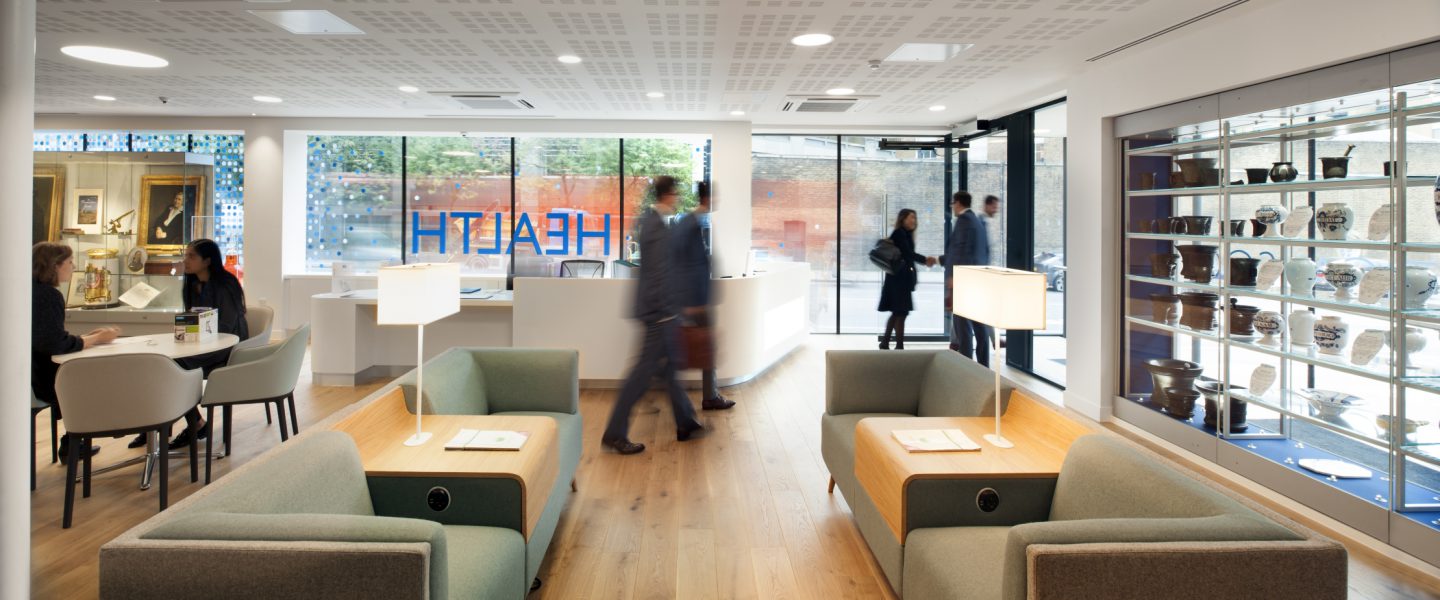OVERVIEW
The Royal Pharmaceutical Society had been in their Lambeth location for many years, as part the Board’s aspirations to develop and modernise its facilities, a decision was made to relocate to a new building which was considered more fit for purpose and able to accommodate the complex and multifaceted nature of the organisation.
The RPS vision centres on ensuring a sustainable, stronger future for its members. By moving to a building as sole occupants, the RPS Board wanted to have more control over its overheads and create a working and professional environment which would engender inter-team collaboration and encourage members to use it as a London “drop in”. In addition, it was seen as an exciting opportunity to really celebrate its heritage by showcasing it’s historic library collection and pharmaceutical artefacts.
A move from a legacy site to a new location, being redeveloped to the RPS’ specification and requirements under a D&B contract, was always going to have great significance.
Neller Davies was approached and asked to develop the FM strategy for the new building, as well as provide support with the relocation programme at the RPS.
Following meetings with key stakeholders and an FM review and audit, we identified the key touch points which required short, medium and long-term action. Our research concluded that the existing FM strategy at Lambeth did not meet the requirements of the new building and, more importantly, wasn’t aligned to the new vision and aspirations the RPS board had for the organisation.
The new strategy recommended the introduction of a ‘mixed economy’ where a small restructured in-house team was formed alongside two new service providers. Following a RFI and RFP process, suppliers were selected to provide maintenance & engineering and cleaning, housekeeping & waste.
Specifications were developed ahead of the relocation around the building fit out detail. Contracts were designed to terminate at the point of building closure and then re-commence under the new contracts post relocation. The M&E contract provided support for the RPS with the building transfer, ensuring knowledge from the build contractor was captured and seamlessly transferred.
As part of our approach, to support the programme management of the relocation we put structure around the workstreams which were previously working vertically in isolation, and brought them together to enable increased communication between all the relevant stakeholders. The RPS has a comprehensive museum and library, storing 45,000 objects relating to the history of British pharmacy. Given the value of these items, transporting and finding an appropriate home in the new building was crucial so that it reflected both the Society’s rich heritage but also embraced the future ambitions of the profession.
The project was not without its challenges. Constantly shifting timelines as a result of moving completion dates and a complex D&B programme made the transition complex, despite this we helped to ensure that throughout this period the RPS was able to continue delivering its high level of professional services without interruption to it’s members.
Over a nine-month period, we supported a successful transition under challenging circumstances. The RPS now has a vibrant new environment in which to work and undertake its business and it’s members have a centre of excellence for their profession about which they can be proud.








